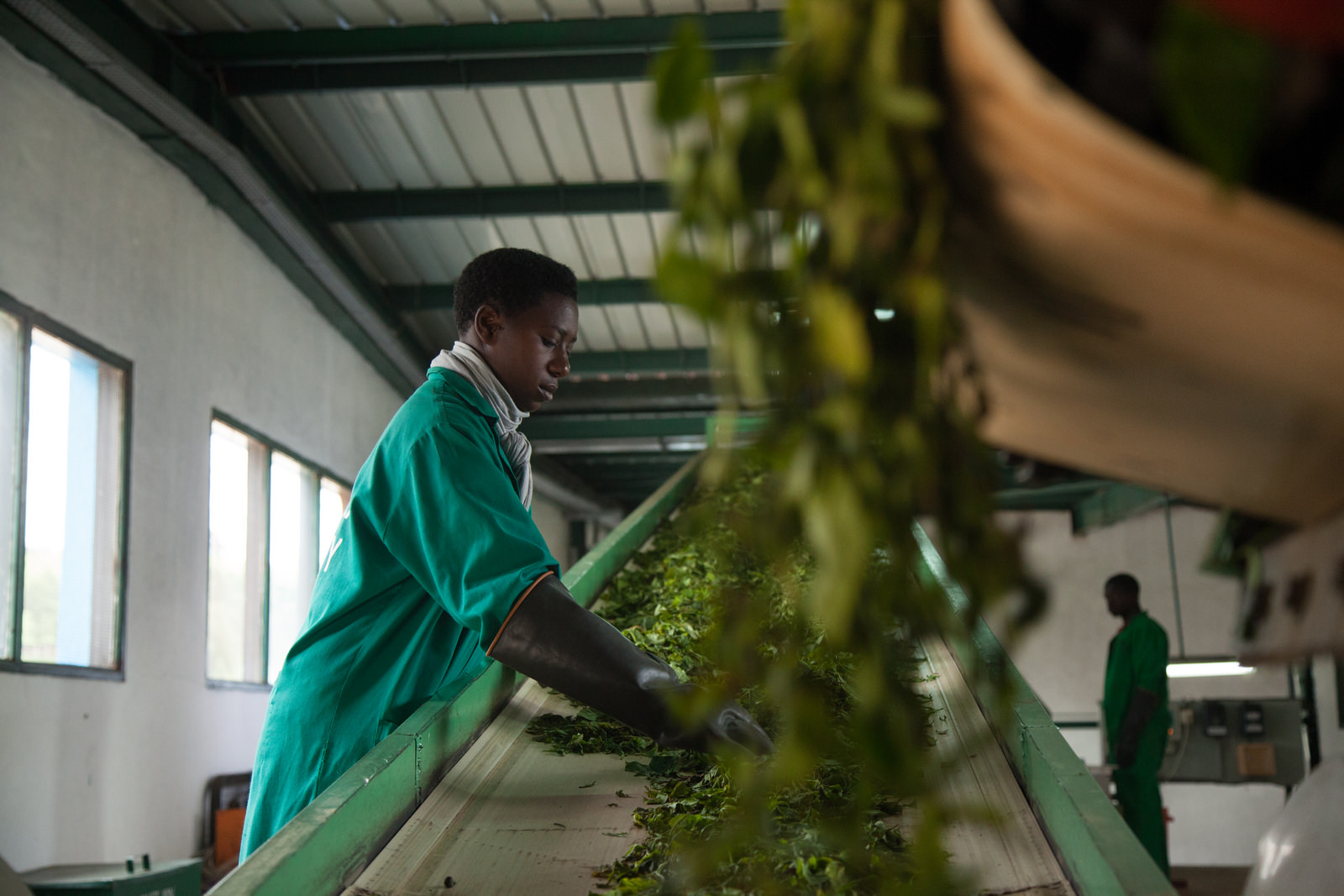How digital technologies are improving supply chains
 A worker sorts the green leaf tea before it reaches the main processing floor in Kitabi, Rwanda.
A worker sorts the green leaf tea before it reaches the main processing floor in Kitabi, Rwanda.Whether it’s the ability to quickly recall tainted foods from supermarkets, or connect small-scale farmers in remote communities to inputs, markets, credit and payment schemes, digital innovations are changing the industry.
FAO invited some digital movers and shakers to its annual Investment Days – organized this year around the theme of innovations for better investments – to share some of the latest trends.
Data, the new fertilizer
“Data is the new fertilizer in agriculture,” said Mouhsine Lakhdissi, Chief Technology Officer at Agridata Consulting.
The Moroccan-based agency aims to make agriculture more profitable, competitive and respectful of the environment through the better use of data.
“Agriculture at its heart is profoundly smart. Old farmers like my grandfather, a small farmer near Fez who lived until he was 104, have all this ancestral knowledge that newcomers and the younger generation don’t have. We thought ‘How can we manage and share this knowledge through the agricultural ecosystem?’” he said.
The answer was to design a series of user-friendly, cloud-based digital tools and get them into the hands of small farmers.
Bee Phyto, for example, is a free mobile app that provides practical guidance on production techniques, like exactly how much fertilizer and water to use on a specific crop variety. While with Bee Agri, farmers can send photos of a diseased plant to a community of agronomists for rapid analysis and technical advice.
Other Agridata apps provide exporters with crucial information on exporting standards and requirements, help farmers manage their budgets and farms, and improve collaboration between farmer organizations and agro-industries.
Transparency and trust
A blockchain is an open, secure digital ledger – a permanent record of transactions – and several industry giants are turning to the technology to improve food safety and traceability.
Nico Losito, Director of Digital Business for IBM, shared the example of the Italian food company Barilla and how it is using blockchain for its pesto.
Delivered on the IBM Cloud, the blockchain captures relevant data along the supply chain, from farm to supermarket shelf.
A quick scan of the pesto’s QR code lets a consumer know, for example, how the basil was grown, when it was transported to the processing plant, and how it was checked against quality standards and stored before being made into pesto.
By increasing transparency, blockchains can prevent food fraud and protect a brand’s reputation, Losito said.
“In IBM we see two trends. One the one hand, governments want more transparency and traceability to improve food safety metrics. And on the other, consumers are becoming more and more demanding, not only interested in the product’s origin, but also in how it was transported, how it was processed. Blockchains create that kind of trust,” he said.

Delivering value to farmers
Frederic Masse, the Africa Agriculture Industry Head for SAP, a leader in software applications, said that digital technologies by themselves have no value, “it’s the users and how they use them that create the value.”
The company launched SAP Leonardo, a digital innovation system that helps customers find solutions through access to emerging technologies, such as machine learning, Artificial Intelligence, Big Data, block chains.
Farmers are using that data – climate data, satellite data, pricing data, management data –to make better decisions that will increase their productivity and profits.
“These technologies have a huge transformational potential for the 250 million smallholders in Africa, but only if the data on those smallholders are in the system. Private companies, input providers, insurers, banks are looking at untapped markets, but they need to know who the farmers are, where the farms are located, which crops they are growing, what transactions have taken place,” he said.
Creating the right conditions
Given the pace of change in this digital age, it is important that small-scale producers, especially women and young people, are able to benefit fully from these technologies – and not get left behind.
"That’s where organizations like FAO, the World Bank, IFAD and EBRD can make a difference", said Carlo Bravi, an FAO senior economist.
“The technologies will eventually come to the small farmers, but by making sure the right conditions are in place, in terms of capacity and infrastructure and so on, we can accelerate that process,” he said.
